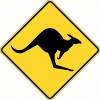I have found that with my LN 62 and a 50 degree bevel blade (62 degree cutting angle) I seem to get great results as far as no tear out. Besides the increase in force needed to push the plane, are there other detriments to using high angles in normal woods?




 Reply With Quote
Reply With Quote





